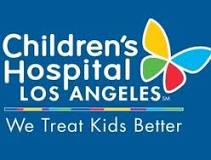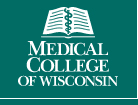UVADEX® and ECP for the Treatment of Pediatric Patients With Steroid Refractory Acute Graft Versus Host Disease
| Status: | Recruiting |
|---|---|
| Conditions: | Hematology |
| Therapuetic Areas: | Hematology |
| Healthy: | No |
| Age Range: | 1 - 21 |
| Updated: | 12/7/2018 |
| Start Date: | January 20, 2016 |
| End Date: | January 2022 |
| Contact: | Marti Spooner |
| Email: | clinicaltrials@mnk.com |
| Phone: | 800-556-3314 |
Single-Arm Study to Assess the Efficacy of UVADEX® (Methoxsalen) Sterile Solution in Conjunction With the THERAKOS® CELLEX® Photopheresis System in Pediatric Patients With Steroid-Refractory Acute Graft-vs-Host Disease (aGvHD)
This is a single-arm, open-label, multicenter study of the efficacy of UVADEX® (methoxsalen)
Sterile Solution in conjunction with THERAKOS® CELLEX® Photopheresis Systems in pediatric
patients with steroid-refractory aGvHD. The study is composed of Screening, Treatment, and
Follow-up Periods.
Sterile Solution in conjunction with THERAKOS® CELLEX® Photopheresis Systems in pediatric
patients with steroid-refractory aGvHD. The study is composed of Screening, Treatment, and
Follow-up Periods.
Screening:
After the informed consent/assent form (ICF) is signed, the screening assessments will be
performed in a single visit to establish the eligibility of the patient, based on inclusion
and exclusion criteria, as well as aGvHD grading. Scheduling of the first week of ECP
treatments and the arrangements for availability of typed and cross-matched donor packed red
blood cells (PRBCs) for transfusion, if required, will be made in advance of patients
entering the Treatment Period.
Treatment Period:
Once eligibility is established, patients will enter the 12-week ECP Treatment Period. The
availability of typed and cross-matched donor PRBCs for transfusion during treatment, if
needed, should be established prior to the scheduling of ECP treatments.
Patients will be allowed to continue standard aGvHD prophylaxis regimens (e.g., cyclosporine,
tacrolimus, methotrexate, mycophenolate mofetil) without the addition of new therapies.
Patients will be allowed to discontinue prophylaxis regimens for reasons of toxicity, and
will also be allowed to switch to another prophylaxis medication within the same class (e.g.,
the calcineurin inhibitors cyclosporine and tacrolimus) for reasons of toxicity.
All patients enrolled in this trial will have received corticosteroids for the treatment of
aGvHD. After entering the treatment period on study, tapering of steroids by total weekly
decrements of 12.5% to 25% of the steroid dose at initiation of ECP therapy is permitted
after a sustained response of aGvHD has been observed for at least 3 consecutive days, with
the suggested goal to decrease the starting steroid dose by at least 50% 4 weeks after
initiation of ECP.
Follow-Up Period:
After completion of the 12-week Treatment Period, patients may continue ECP treatment on
commercial product at the Principal Investigator's discretion. Acute GvHD status will be
assessed 4 weeks after completion of the Treatment Period. Patient survival will be assessed
by passive follow-up (chart review) 26 weeks after initiation of ECP treatment.
After the informed consent/assent form (ICF) is signed, the screening assessments will be
performed in a single visit to establish the eligibility of the patient, based on inclusion
and exclusion criteria, as well as aGvHD grading. Scheduling of the first week of ECP
treatments and the arrangements for availability of typed and cross-matched donor packed red
blood cells (PRBCs) for transfusion, if required, will be made in advance of patients
entering the Treatment Period.
Treatment Period:
Once eligibility is established, patients will enter the 12-week ECP Treatment Period. The
availability of typed and cross-matched donor PRBCs for transfusion during treatment, if
needed, should be established prior to the scheduling of ECP treatments.
Patients will be allowed to continue standard aGvHD prophylaxis regimens (e.g., cyclosporine,
tacrolimus, methotrexate, mycophenolate mofetil) without the addition of new therapies.
Patients will be allowed to discontinue prophylaxis regimens for reasons of toxicity, and
will also be allowed to switch to another prophylaxis medication within the same class (e.g.,
the calcineurin inhibitors cyclosporine and tacrolimus) for reasons of toxicity.
All patients enrolled in this trial will have received corticosteroids for the treatment of
aGvHD. After entering the treatment period on study, tapering of steroids by total weekly
decrements of 12.5% to 25% of the steroid dose at initiation of ECP therapy is permitted
after a sustained response of aGvHD has been observed for at least 3 consecutive days, with
the suggested goal to decrease the starting steroid dose by at least 50% 4 weeks after
initiation of ECP.
Follow-Up Period:
After completion of the 12-week Treatment Period, patients may continue ECP treatment on
commercial product at the Principal Investigator's discretion. Acute GvHD status will be
assessed 4 weeks after completion of the Treatment Period. Patient survival will be assessed
by passive follow-up (chart review) 26 weeks after initiation of ECP treatment.
Inclusion:
1. Male or female 1 to 21 years of age at the time of consent
2. Steroid-refractory grade B-D aGvHD.
- Steroid-refractory is defined as a failure to respond to steroid treatment, with
failure to respond defined as any grade B-D (IBMTR grading) aGvHD that shows
progression ≥ 3 days, or no improvement by 5 days of treatment with 12 mg/kg/day
methylprednisolone or equivalent in subjects with lower GI or liver disease, or
skin disease associated with bullae. Grade D organ involvement will be limited to
skin and liver.
- Steroid refractory may also be defined as a failure to respond to 1 mg/kg/day of
methylprednisolone or equivalent in subjects with disease confined to upper GI
disease or lesser degrees of skin GvHD.
- Subjects with lack of complete response after 2 weeks of steroid treatment.
3. A Lansky scale Performance Status score ≥ 30.
4. Laboratory values are within the following limits, assessed within 3 days of the first
study treatment:
- Absolute neutrophil count > 0.5 × 10^9/L.
- Creatinine level < 2 times the upper limit of normal.
5. For patients with isolated upper GI symptoms, pre-Screening biopsy results to confirm
diagnosis of aGvHD.
6. Female patients of childbearing potential and nonsterilized males who are sexually
active with a female partner must be practicing highly effective, reliable, and
medically approved contraceptive regimen throughout their participation in the study
and for 3 months following the last ECP treatment. Or, for the US only, abstinence may
be used in place of an approved contraceptive regimen. Females of childbearing
potential are those who have reached the onset of menarche, or 8 years of age,
whichever comes first. Approved contraceptive methods for female patients of
childbearing potential or nonsterilized males who are sexually active with a female
partner are as follows:
- Barrier methods of contraception: condom or occlusive cap (diaphragm or
cervical/vault caps) with spermicidal foam/gel/film/cream/suppository.
- Established use of oral, injectable, or implanted hormonal methods of
contraception.
- Placement of an intrauterine device or intrauterine system.
7. Signed informed consent/assent is obtained before conducting any study procedures; the
parent, legal guardian, or legally authorized representative of a minor must also
provide written informed consent.
Exclusion:
1. Currently enrolled in another clinical trial for the treatment of aGvHD.
2. Use of any experimental regimens or medication(s) for aGvHD treatment.
3. Treatment with > 2.0 mg/kg/day of methylprednisolone equivalents for aGvHD within 30
days prior to the first study treatment.
4. Overt signs of relapse of the underlying condition.
5. Uncontrolled viral, fungal, or bacterial infection.
6. Platelet count < 20.0 × 10^9/L, despite platelet transfusion.
7. Inability to tolerate the extracorporeal volume shifts associated with ECP treatment.
8. Uncontrolled GI bleeding.
9. Veno-occlusive liver disease.
10. Life expectancy < 4 weeks.
11. Patient requires invasive ventilation or vasopressor support.
12. Known human immunodeficiency virus (HIV) or hepatitis B or C virus infection (proof of
seronegativity within 6 months of screening is required).
13. Known allergy or hypersensitivity to methoxsalen, Uvadex, or its excipients.
14. Known hypersensitivity and allergy to heparin and Anticoagulant Citrate Dextrose
Formula-A (ACD-A).
15. Co-existing photosensitive disease (e.g., porphyria, systemic lupus erythematosus,
albinism) or aphakia.
16. Coagulation disorders that cannot be corrected with simple transfusion.
17. Co-existing melanoma, basal cell, or squamous cell skin carcinoma.
18. Previous splenectomy.
19. White blood cell count greater than 25,000 mm3.
20. Currently being treated with any systemic immunosuppressive or biologic therapy for
the treatment of a medical condition other than aGvHD.
21. Female patient is breastfeeding or pregnant.
22. Any medical concerns that may pose risk to the patient.
23. Any psychological, familial, sociological, and/or geographical condition that may
potentially hamper compliance with the study protocol and follow-up schedule.
We found this trial at
19
sites
Click here to add this to my saved trials
Childrens Hospital Los Angeles Children's Hospital Los Angeles is a 501(c)(3) nonprofit hospital for pediatric...
Click here to add this to my saved trials
Children's Hospital of Philadelphia Since its start in 1855 as the nation's first hospital devoted...
Click here to add this to my saved trials
3181 Southwest Sam Jackson Park Road
Portland, Oregon 97239
Portland, Oregon 97239
503 494-8311

Oregon Health and Science University In 1887, the inaugural class of the University of Oregon...
Click here to add this to my saved trials
University of Utah Research is a major component in the life of the U benefiting...
Click here to add this to my saved trials
1100 Fairview Avenue North
Seattle, Washington 98109
Seattle, Washington 98109
(206) 667-5000

Fred Hutchinson Cancer Research Center At Fred Hutchinson Cancer Research Center, our interdisciplinary teams of...
Click here to add this to my saved trials
2015 Uppergate Drive
Atlanta, Georgia 30322
Atlanta, Georgia 30322
Click here to add this to my saved trials
Boston Children's Hospital Boston Children's Hospital is a 395-bed comprehensive center for pediatric health care....
Click here to add this to my saved trials
Click here to add this to my saved trials
Click here to add this to my saved trials
Click here to add this to my saved trials
Hackensack University Medical Center Hackensack University Medical Center, part of the Hackensack University Health Network,...
Click here to add this to my saved trials
Click here to add this to my saved trials
Medical College of Wisconsin The Medical College (MCW) of Wisconsin is a major national research...
Click here to add this to my saved trials
2220 Pierce Avenue
Nashville, Tennessee 37232
Nashville, Tennessee 37232
Principal Investigator: Carrie Kitko, MD
Click here to add this to my saved trials
Yale University Yale's roots can be traced back to the 1640s, when colonial clergymen led...
Click here to add this to my saved trials
Phoenix Children's Hospital Phoenix Children's Hospital has provided hope, healing, and the best healthcare for...
Click here to add this to my saved trials
111 Michigan Ave NW
Washington, District of Columbia
Washington, District of Columbia
(202) 476-5000

Childrens National Medical Center As the nation’s children’s hospital, the mission of Children’s National Medical...
Click here to add this to my saved trials
Click here to add this to my saved trials







